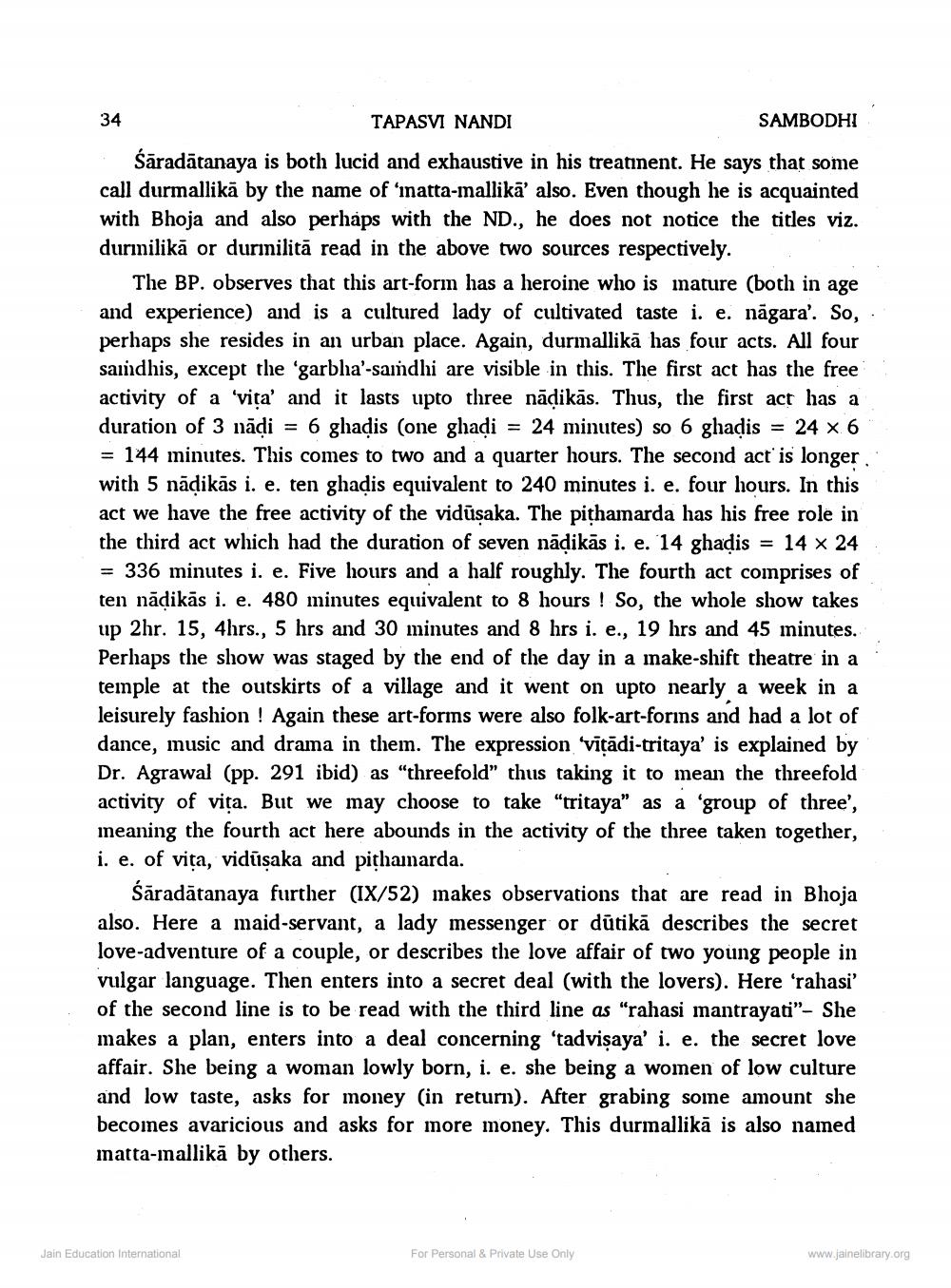________________
TAPASVI NANDI
SAMBODHI
:
Sāradātanaya is both lucid and exhaustive in his treatinent. He says that some call durmallikā by the name of 'inatta-mallikā' also. Even though he is acquainted with Bhoja and also perhaps with the ND., he does not notice the titles viz. durinilikā or durinilitā read in the above two sources respectively.
The BP. observes that this art-forın has a heroine who is inature (both in age and experience) and is a cultured lady of cultivated taste i. e. nāgara'. So, perhaps she resides in an urban place. Again, durmallikā has four acts. All four saindhis, except the 'garbha'-samdhi are visible in this. The first act has the free activity of a 'vita' and it lasts upto three nādikās. Thus, the first act has a duration of 3 nādi = 6 ghadis (one ghadi = 24 minutes) so 6 ghadis = 24 x 6 = 144 minutes. This comes to two and a quarter hours. The second act is longer with 5 nāļikās i. e. ten ghadis equivalent to 240 minutes i. e. four hours. In this act we have the free activity of the vidūsaka. The pithamarda has his free role in the third act which had the duration of seven nādikās i. e. 14 ghadis = 14 x 24 = 336 minutes i. e. Five hours and a half roughly. The fourth act comprises of ten nādikās i. e. 480 minutes equivalent to 8 hours ! So, the whole show takes up 2hr. 15, 4hrs., 5 hrs and 30 minutes and 8 hrs i. e., 19 hrs and 45 minutes. Perhaps the show was staged by the end of the day in a make-shift theatre in a temple at the outskirts of a village and it went on upto nearly a week in a leisurely fashion ! Again these art-forms were also folk-art-forins and had a lot of dance, music and drama in them. The expression 'vitādi-tritaya' is explained by Dr. Agrawal (pp. 291 ibid) as "threefold" thus taking it to mean the threefold activity of vita. But we may choose to take "tritaya" as a group of three', meaning the fourth act here abounds in the activity of the three taken together, i. e. of vita, vidūsaka and pithamarda.
Śäradātanaya further (IX/52) makes observations that are read in Bhoja also. Here a maid-servant, a lady messenger or dūtikā describes the secret love-adventure of a couple, or describes the love affair of two young people in vulgar language. Then enters into a secret deal (with the lovers). Here 'rahasi' of the second line is to be read with the third line as "rahasi mantrayati"- She makes a plan, enters into a deal concerning 'tadvisaya' i. e. the secret love affair. She being a woman lowly born, i. e. she being a women of low culture and low taste, asks for money in return). After grabing some amount she becomes avaricious and asks for more money. This durmallikā is also named matta-inallikā by others.
Jain Education International
For Personal & Private Use Only
www.jainelibrary.org




